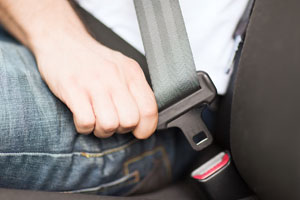Senior Reporter
Seat Belts Required for Passengers in Large Trucks Starting Aug. 8

While it already requires that drivers wear seat belts, the agency has been silent on whether passengers riding in large trucks must use seat belts.
“The only quantifiable cost of the final rule is the value of the person’s time necessary to buckle the seat belt, which is negligible,” FMCSA said in a June 6 pre-publication announcement. “The benefits of this rule are any fatalities or injuries avoided or reduced in severity as a result of seat belt use.”
The rule, effective Aug. 8, holds motor carriers and drivers responsible for ensuring that passengers riding in property-carrying CMVs are using seat belts. (Editor's note: An earlier version of this story calculated the effective date of the rule incorrectly.)
“Occupants would include instructors, evaluators or any other personnel who might be seated in a property-carrying CMV, regardless of their status,” the agency said.
Since 1990, federal regulations require manufacturers of trucks weighing more than 10,000 pounds to install seat belts or a “complete passenger protection system” at every seating position in a truck, the rule said.
FMCSA’s most recent Seat Belt Usage by Commercial Motor Vehicle (CMV) Drivers Survey, published in March 2014, found that commercial motor vehicle passengers use seat belts at a lower rate (73%) than CMV drivers (84%).
The agency rejected arguments in comments on the proposed rule that a carrier would have no control over nondrivers riding in a truck. That notion contradicts existing requirements that prohibit the transportation of anyone without specific written authorization from the carrier, the agency said.
“The motor carrier, therefore, has knowledge of each occupant of the property-carrying vehicle and can easily require that authorized passengers buckle up,” FMCSA said.
FMCSA did not address the topic of current sleeper berth restraints because commenters “provided no information that would enable the agency to address that topic in this rulemaking.”
The final rule does not require the use of seat belts in passenger-carrying CMVs.

